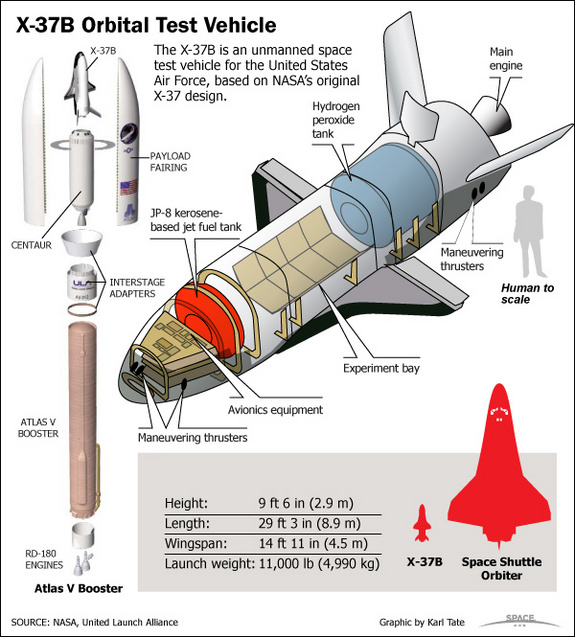On Friday, March 4, the U.S. Air Force is scheduled to launch the second X-37B prototype space plane from Cape Canaveral. The first space plane of the two prototypes built by Boeing Phantom Works, which the Air Force launched in April 2010, stayed on orbit for seven months.
On the eve of the second flight, the X-37B’s mission is still unclear. The Air Force has declined to discuss the program’s budget publicly or provide a detailed explanation of its objectives.

The unique capability of the space plane appears to be its ability to return from orbit and land autonomously on a runway. This capability requires extra structure, such as wings and heat-shielding, to withstand the rigors of re-entry, which makes the plane significantly heavier than spacecraft that are not designed to return to Earth. Because of this extra mass, the space plane is more difficult to maneuver in space and costs tens of million dollars more to launch.

“Because of its weight and relative lack of maneuverability, the space plane is not well-suited for a number of missions,” said Laura Grego, a senior scientist with Union of Concerned Scientists (UCS)’s Global Security Program. “For example, it would have a harder time carrying payloads into orbit, maneuvering in space, rendezvousing with satellites, and releasing multiple payloads. Yes, the space plane may offer more flexibility and is potentially reusable, but that comes at a very high price compared with the alternatives. We have not seen an analysis that shows why it is worth that high price.”
The Air Force says the X-37B will allow it to carry out experiments in space over a long period of time and return them to Earth. Thus far, however, the Air Force has not provided any cost or capability analyses that compare the space plane with simpler systems, for example, those that return by parachute rather than a runway landing.
Given the Air Force’s reticence in discussing the rationale behind the space plane and the fact that the program was created by a branch of the U.S. military, other countries may infer that the X-37B has a specialized military purpose. But, according to Grego, the space plane does not make sense as a space weapon or even for deploying space weapons.
“With the current emphasis on cutting budgets and getting the most for our tax dollars,” said Grego, “the space plane is an extravagant system without a convincing mission.”
For further analysis published by Dr. Grego refer to her two posts ( 1, 2 ) in UCS’ ‘All Things Nuclear’ blog.

Source Space.com: All about our solar system, outer space and exploration
















